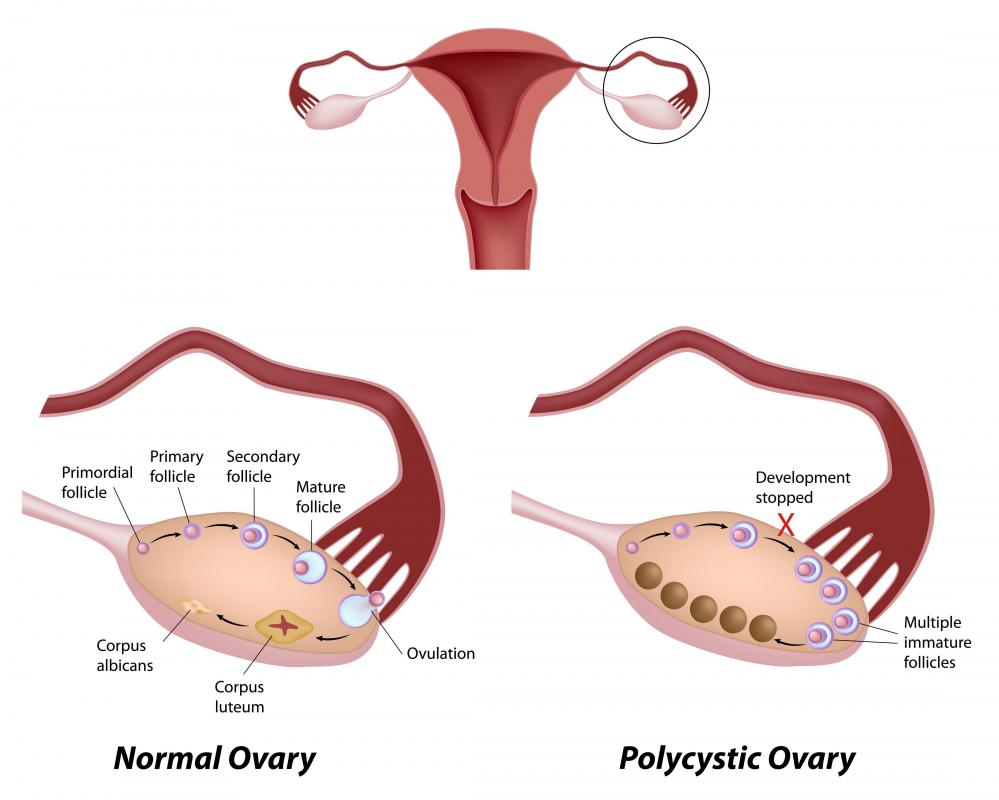At WiseGEEK, we're committed to delivering accurate, trustworthy information. Our expert-authored content is rigorously fact-checked and sourced from credible authorities. Discover how we uphold the highest standards in providing you with reliable knowledge.
What is a Laparoscopic Ovarian Cystectomy?
A laparoscopic ovarian cystectomy is a type of surgery that is meant to remove ovarian cysts from the female body without requiring a hospital stay or major scarring. The procedure involves the use of a laparoscope, which is a small device with a light and a camera on it, allowing the doctor to see the interior of the body during the surgery. Since this tool is so small, most patients only need to have a few small incisions made rather than one large cut, resulting in less noticeable scarring. The procedure is considered noninvasive, and is typically done on an outpatient basis. Unfortunately, women with particularly large or solid cysts, or whose ovaries need to be removed, usually need to have a conventional ovarian cystectomy performed instead.
During the typical laparoscopic ovarian cystectomy, the laparoscope is inserted into a small slit near the belly button. The light and camera on the end of this device, along with the carbon dioxide that may be inserted into the body, allow the doctor to see the interior clearly. Most doctors also need to make a few other small cuts in the abdomen in order to fit additional instruments involved in removing the cysts. Since the cysts need to be able to fit through small slits in the abdomen, those that are particularly big, solid, or attached to a lot of ovarian tissue cannot typically be removed with a laparoscopic ovarian cystectomy. Many patients prefer this procedure since it usually takes an hour or less, and most people are able to return home just a few hours after the procedure, unlike a standard ovarian cystectomy.

Like any surgery, there are risks involved with a laparoscopic ovarian cystectomy. For example, one or all of the incision sites may become infected, causing redness, pain, discharge, and a fever. Some patients may also notice excessive bleeding afterward. In addition, most patients are placed under general anesthesia during surgery, which means that there is some risk of having a negative reaction to this powerful medication.

There are also some side effects to be prepared for after a laparoscopic ovarian cystectomy, though they are generally mild. For instance, most women feel some tenderness near the incisions for the first few days after surgery, as well as nausea and bloating. Fatigue, vaginal bleeding, stomach pain, and cramping are also common side effects of this procedure. The majority of women should be fully healed about a month after a laparoscopic ovarian cystectomy.
AS FEATURED ON:
AS FEATURED ON:















Discuss this Article
Post your comments